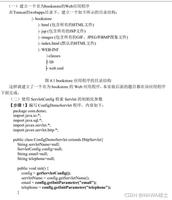如何配置DateFormatter捕获微秒
iOS Date()返回日期的精度至少为微秒。
我通过调用Date().timeIntervalSince1970导致1490891661.074981
然后,我需要将日期转换为微秒精度的字符串。
我使用DateFormatter以下方式:
let formatter = DateFormatter()formatter.dateFormat = "yyyy-MM-dd'T'HH:mm:ss.SSSSSSZZZZZ"
print(formatter.string(from: date))
导致
"2017-03-30T16:34:21.075000Z"
现在,如果我们比较两个结果:
1490891661.074981并且"2017-03-30T16:34:21.075000Z"
我们可以注意到将DateFormatter日期舍入为毫秒精度,同时仍然以微秒为单位显示零。
有人知道如何配置,DateFormatter以便我可以保持微秒并获得正确的结果"2017-03-30T16:34:21.074981Z"吗?
回答:
感谢@MartinR解决了我的问题的上半部分,并感谢@ForestKunecke给了我一些解决问题的后半部分的技巧。
基于他们的帮助,我创建了现成的解决方案,该解决方案可以毫秒精度将字符串中的日期转换为字符串,反之亦然:
public final class MicrosecondPrecisionDateFormatter: DateFormatter { private let microsecondsPrefix = "."
override public init() {
super.init()
locale = Locale(identifier: "en_US_POSIX")
timeZone = TimeZone(secondsFromGMT: 0)
}
required public init?(coder aDecoder: NSCoder) {
fatalError("init(coder:) has not been implemented")
}
override public func string(from date: Date) -> String {
dateFormat = "yyyy-MM-dd'T'HH:mm:ss"
let components = calendar.dateComponents(Set([Calendar.Component.nanosecond]), from: date)
let nanosecondsInMicrosecond = Double(1000)
let microseconds = lrint(Double(components.nanosecond!) / nanosecondsInMicrosecond)
// Subtract nanoseconds from date to ensure string(from: Date) doesn't attempt faulty rounding.
let updatedDate = calendar.date(byAdding: .nanosecond, value: -(components.nanosecond!), to: date)!
let dateTimeString = super.string(from: updatedDate)
let string = String(format: "%@.%06ldZ",
dateTimeString,
microseconds)
return string
}
override public func date(from string: String) -> Date? {
dateFormat = "yyyy-MM-dd'T'HH:mm:ssZZZZZ"
guard let microsecondsPrefixRange = string.range(of: microsecondsPrefix) else { return nil }
let microsecondsWithTimeZoneString = String(string.suffix(from: microsecondsPrefixRange.upperBound))
let nonDigitsCharacterSet = CharacterSet.decimalDigits.inverted
guard let timeZoneRangePrefixRange = microsecondsWithTimeZoneString.rangeOfCharacter(from: nonDigitsCharacterSet) else { return nil }
let microsecondsString = String(microsecondsWithTimeZoneString.prefix(upTo: timeZoneRangePrefixRange.lowerBound))
guard let microsecondsCount = Double(microsecondsString) else { return nil }
let dateStringExludingMicroseconds = string
.replacingOccurrences(of: microsecondsString, with: "")
.replacingOccurrences(of: microsecondsPrefix, with: "")
guard let date = super.date(from: dateStringExludingMicroseconds) else { return nil }
let microsecondsInSecond = Double(1000000)
let dateWithMicroseconds = date + microsecondsCount / microsecondsInSecond
return dateWithMicroseconds
}
}
用法:
let formatter = MicrosecondPrecisionDateFormatter()let date = Date(timeIntervalSince1970: 1490891661.074981)
let formattedString = formatter.string(from: date) // 2017-03-30T16:34:21.074981Z
以上是 如何配置DateFormatter捕获微秒 的全部内容, 来源链接: utcz.com/qa/425771.html









